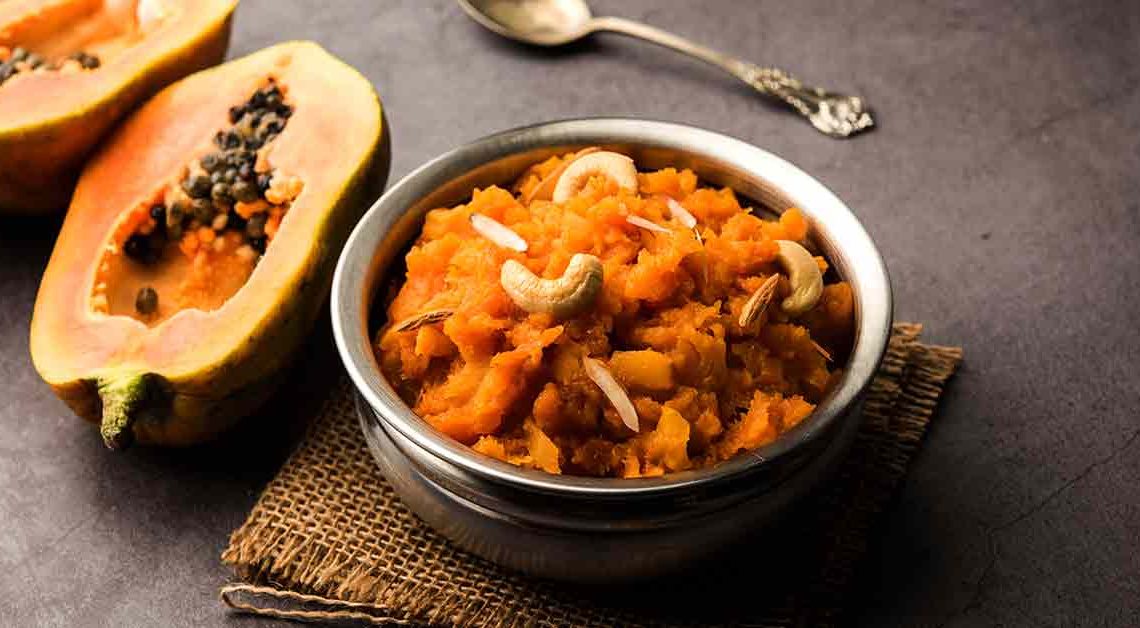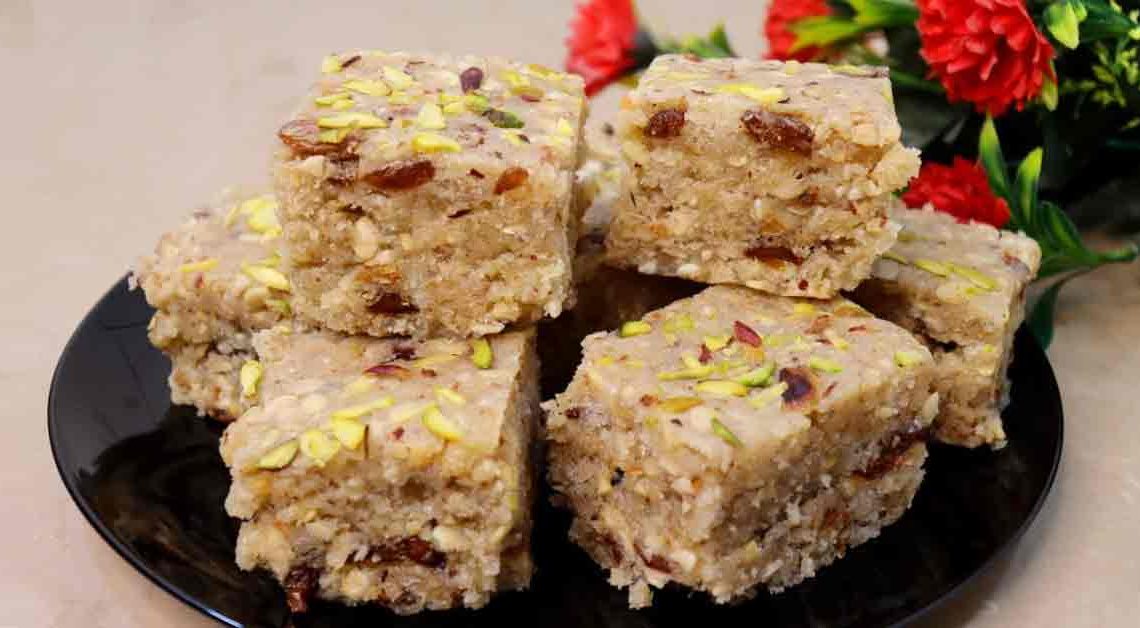From Papaya to Palate: The Art of Papita Sweet Halwa

Welcome to Mithainama! a delectable journey through the enchanting world of Indian sweets. Today, we invite you to savor the rich, fragrant, and melt-in-your-mouth goodness of Papita Sweet Halwa. This delightful treat, known for its vibrant golden hue and mouthwatering taste, is a treasure trove of flavors waiting to be discovered.
Papita, or papaya, might not be the first fruit that comes to mind when you think of desserts, but its versatility is truly a revelation. From the moment you take your first bite, you’ll be transported to a world where the sweetness of papita marries the richness of ghee, the aroma of cardamom, and the crunch of roasted nuts.
In this culinary adventure, we’ll delve into the history and cultural significance of this divine dessert, sharing anecdotes that highlight its place in festive celebrations and family traditions. We’ll also explore the variations and regional adaptations of Papita Sweet Halwa, showcasing how this sweet has evolved over time.
So, join us as we embark on this sweet escapade through the world of Papita Sweet Halwa, where culinary magic meets tradition, and every bite is a symphony of flavors.
Origin of Papita Sweet Halwa
Papita Sweet Halwa, a cherished Indian dessert, boasts a fascinating origin rooted in the rich culinary traditions of the Indian subcontinent. The origins of this delectable sweet can be traced back to ancient times, where it was prepared as a symbol of celebration and hospitality.
The concept of halwa, a sweet, dense confection, has been a part of Indian cuisine for centuries. It is said to have its roots in the Persian word “halva,” which means “sweet.” Halwa was introduced to India through trade and cultural exchanges with Persia and Central Asia. Over time, it adapted to local tastes and ingredients, resulting in a myriad of regional variations.
Papaya, known as “papita” in Hindi, found its way into Indian desserts due to its availability and natural sweetness. Its integration into halwa was a culinary revelation. The papita’s unique texture and flavor, when combined with ghee, sugar, cardamom, and aromatic spices, transformed into a sweet symphony that delighted taste buds.
History of Papita Sweet Halwa
The history of this delectable halwa, a delectable Indian dessert, is a journey through time, flavor, and culture. Its origins can be traced to the heart of the Indian subcontinent, where the fusion of culinary traditions and local ingredients resulted in this delightful sweet.
Papita, or papaya, was cultivated in India for centuries, with mentions dating back to ancient texts like the Charaka Samhita. Its natural sweetness and versatility made it an intriguing addition to Indian cuisine. Halwa, on the other hand, has a history intertwined with the Middle East, brought to the Indian subcontinent through trade and cultural exchanges.
The marriage of papita and halwa likely occurred as part of the culinary experimentation that has always characterized Indian cooking. As local communities adapted halwa recipes to suit their tastes, they incorporated papita’s distinct texture and sweet flavor, creating a unique regional delicacy.
Cultural Significance
It holds a significant place in Indian culture, where food often transcends its role as mere sustenance and becomes a symbol of tradition, celebration, and togetherness. Here’s a glimpse into the cultural significance of this delectable dessert:
Festivals and Celebrations: It is a quintessential treat during Indian festivals and special occasions. It is prepared to mark joyous events, including Diwali, Holi, weddings, and religious ceremonies. Its presence on the menu symbolizes abundance and festivity.
Symbol of Prosperity: The vibrant golden color is associated with good luck and wealth in Indian culture. It is often prepared to wish prosperity and success in various endeavors, making it a popular choice for festivals and auspicious occasions.
Traditional Rituals: In some regions of India, Papita Sweet Halwa plays a role in traditional rituals and customs. It is offered as prasad (a sacred offering) in temples and during pujas (worship ceremonies), signifying the divine blessings of the deities.
Where is Papita Sweet Halwa Famous?
Papita Sweet Halwa, a delightful Indian dessert, is famous and enjoyed across various regions of India. While it may not be as universally recognized as some other Indian sweets like Gulab Jamun or Jalebi, it has a strong presence in specific parts of the country. Here are a few regions where it is particularly famous:
North India: It is popular in Northern states like Punjab, Haryana, and Uttar Pradesh. It is often prepared during festivals and special occasions in these regions, and it’s delightful flavor and vibrant color make it a favorite among locals.
Gujarat: In Gujarat, Papita Sweet Halwa, known as “Papaya no Halwo,” is a cherished dessert. Gujarati cuisine features a range of delightful sweets, and this halwa adds a unique and fruity twist to the dessert offerings.
Rajasthan: Rajasthan, with its rich culinary heritage, also embraces halwa. It’s served as a traditional treat during festivals and celebrations in the state.
Interesting Facts and Trivia
Papita Sweet Halwa, with its unique flavors and cultural significance, has some interesting facts and trivia associated with it:
- It showcases the versatility of papaya, a tropical fruit not commonly associated with desserts. It demonstrates how a seemingly everyday fruit can be transformed into a delectable sweet dish.
- In some Indian cultures, Papita Sweet Halwa is considered an auspicious dish and is offered as prasad (a sacred offering) in temples during religious ceremonies and festivals.
- While the core ingredients of papaya, ghee, sugar, and cardamom remain consistent, there are regional variations throughout India. Each region adds its own unique twist to the recipe, such as using different nuts, flavorings, or additional ingredients.
- The bright golden color is a visual treat and a symbol of prosperity in Indian culture. The color is derived naturally from the ripe papaya, and it makes the dessert even more appealing.
- While it is undeniably a sweet treat, papaya is a rich source of vitamins, minerals, and dietary fiber. This means that while indulging in Papita Sweet Halwa, you’re also enjoying some of the health benefits of papaya.
Did You Know?
Papita Sweet Halwa not only delights the taste buds but also offers several health benefits. Here’s a tasty tidbit:
- Papaya is a nutritional powerhouse, loaded with vitamins A and C. These vitamins are essential for maintaining healthy skin, vision, and a strong immune system.
- It contains dietary fiber, which aids digestion and promotes a feeling of fullness, potentially helping with weight management.
- Papaya is known for its high antioxidant content, which can help combat free radicals in the body, reducing the risk of chronic diseases and promoting overall well-being.
- The monounsaturated fats in ghee, a key ingredient in the halwa, may have a positive impact on heart health when consumed in moderation.
- The vitamins and antioxidants in papaya contribute to healthy, glowing skin, reducing the signs of aging and maintaining skin elasticity.







